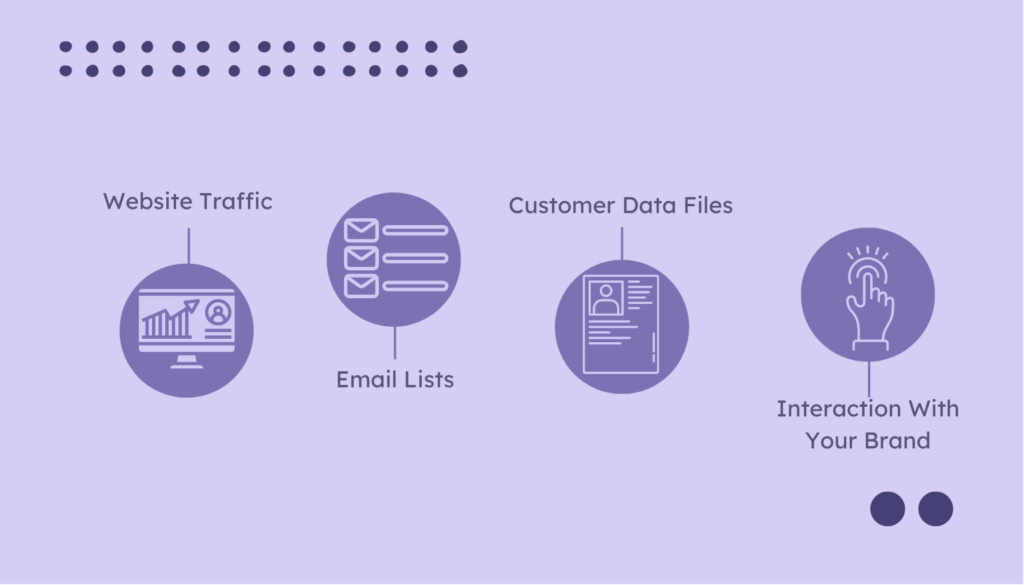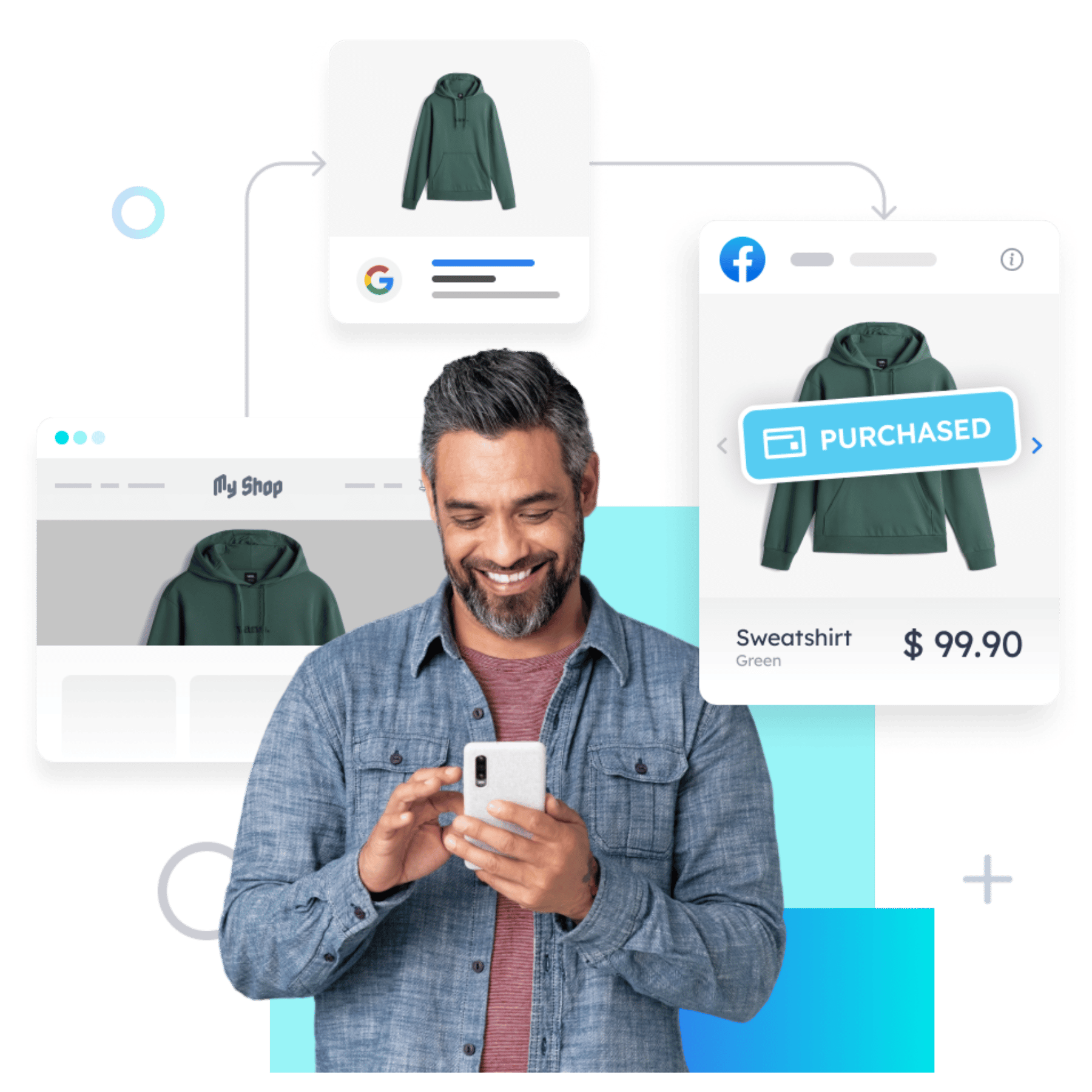
Social media has become an integral part of our lives as we embrace it in both our personal and professional lives. Among the various social media platforms available, Facebook is the largest social networking site, with almost 3 billion monthly users. That means approximately 37% of the world’s population uses Facebook. With such a vast user base, it’s no wonder that Facebook has become a go-to platform for advertisers to reach their target audience.
Facebook retargeting works by using a piece of code called the Facebook Pixel, which tracks user behavior on the advertiser’s website or app. This data is then used to create custom audiences of users who have shown interest in the brand, making it more likely that they will convert into customers. This leads to higher click-through rates, conversion rates, and return on investment (ROI) compared to other forms of digital advertising, making it one of the most effective advertising techniques.
The custom audience is then targeted with ads on Facebook or other websites/apps that are part of Facebook’s advertising network. Advertisers can use various optimization techniques to improve the effectiveness of their retargeting campaigns, such as adjusting ad frequency and using dynamic ads that show personalized product recommendations based on user behavior.
We’ll dive deeper into how Facebook retargeting works and explore some of the best practices for creating effective retargeting campaigns. Whether you’re a business owner looking to grow your customer base or a marketer looking to improve your digital advertising skills, understanding Facebook retargeting is essential for success in today’s digital landscape.
How Does the Facebook Pixel Work?
The Facebook Pixel is a small piece of code that enables advertisers to track user behavior on their website or app. It is a powerful tool that provides businesses with valuable insights into their customers’ behavior, which can be used to create targeted advertising campaigns.
To set up the Facebook Pixel, you must first create a Facebook Ads Manager account and then generate a pixel code. This code can then be placed on your website or app to start tracking user behavior. Once installed, the pixel begins to collect data on user behavior, including the pages they visit, the actions they take, and the products they interact with.
One of the key features of the Facebook Pixel is its ability to track user behavior across devices. This means that if a user visits a website on their desktop computer and later returns to their mobile phone, the pixel will still be able to track their behavior and attribute it to the same user.
The Facebook Pixel collects various types of data, including standard events and custom events. Standard events include actions such as page views, add-to-cart, and purchases. Custom events are events that are specific to the advertiser’s business and can be set up to track any activity on the website or app.
In addition to tracking user behavior, the Facebook Pixel also enables advertisers to create custom audiences. Custom audiences are groups of users who have interacted with the website or app in a specific way, such as adding a product to their cart but not completing the purchase. These custom audiences can then be targeted with specific ads on Facebook or other websites and apps that are part of Facebook’s advertising network.
The Facebook Pixel also provides valuable insights into the performance of advertising campaigns. Advertisers can track key metrics such as conversions, click-through rates, and cost-per-click to measure the effectiveness of their ads. This data can then be used to optimize campaigns for better performance.
Facebook Custom Audiences For a Winning Retargeting Strategy
Custom audiences allow advertisers to create highly targeted ad campaigns based on specific user behaviors or characteristics. By using custom audiences, advertisers can serve ads to users who have already shown an interest in their products or services, increasing the likelihood of conversion and maximizing the ROI of their advertising spend.
Custom audiences for retargeting are created using a variety of data sources, including website traffic, email lists, and customer data files. Here’s a breakdown of how custom audiences are created using each of these sources:
1. Website Traffic
Advertisers can create custom audiences based on existing website traffic by installing the Facebook Pixel on their website. The pixel tracks user behavior on the website, including pages, visited, actions taken, and products viewed. This data is then used to create a custom audience of users who have interacted with the website in a specific way.
For example, an advertiser could create a custom audience of users who have added a product to their cart but have not completed the purchase, and then retarget them on Facebook or Instagram.
2. Email Lists
Advertisers can also create custom audiences for retargeting based on email lists. To create a custom audience using an email list, the advertiser must first upload the list to Facebook. Facebook will then match the email addresses on the list to Facebook user accounts and create a custom audience of users who match the list.
3. Customer Data Files
Advertisers can also create custom audiences based on customer data files, such as CRM databases. To create a custom audience using a customer data file, the advertiser must first upload the file to Facebook. Facebook will then match the data in the file to Facebook user accounts and create a custom audience of users who match the data.
4. Interaction With Your Brand
By using Facebook’s engagement custom audience feature, you can create an audience of users who have interacted with your Facebook or Instagram content in a specific way. For example, you can create an audience of users who have watched a certain percentage of a video you posted or engaged with a specific post.
This type of custom audience is very valuable because it allows you to target users who are already familiar with your brand and have shown an interest in your content. This can be especially effective for businesses that rely heavily on social media as part of their marketing strategy.
For example, if you run a fitness studio, you could create a custom audience of users who have engaged with your Facebook page in the past month. You could then target this audience with ads promoting a special promotion or a new class schedule, increasing the likelihood that they will take action and sign up for a class.

Techniques for Optimizing Facebook Retargeting Ads
In order to get the most out of your retargeting efforts, it’s important to optimize your ads using various techniques, such as:
- Adjust Ad Frequency: One of the most important aspects of optimizing your Facebook retargeting ads is managing the frequency at which they are shown to users. If your ads are being shown too frequently, they can become annoying and turn potential customers off. On the other hand, if your ads are not being shown often enough, you may not be making the most of your retargeting efforts. Facebook offers a feature called “frequency capping” that allows you to set a limit on the number of times a user will see your ad in a certain time period. It’s important to monitor your ad frequency and adjust it accordingly to avoid ad fatigue.
- Use Dynamic Ads: Dynamic ads are a powerful tool for retargeting on Facebook. They allow you to show users products or services that are specifically tailored to their interests or browsing history. This means that your ads will be more relevant and personalized, increasing the likelihood of conversion. Facebook’s dynamic ad feature also allows you to display multiple products or services in a single ad, making it easier for users to find what they are looking for.
- Test Ad Copy and Creative: A/B testing is a powerful tool for optimizing your Facebook retargeting ads. By testing different ad copy and creative, you can determine which elements are most effective at driving conversions. It’s important to only test one element at a time, such as the headline or image, in order to accurately determine which changes are having an impact.
- Optimize Landing Pages: Your ad is only one piece of the puzzle when it comes to retargeting on Facebook. Once a user clicks on your ad, they will be directed to a landing page. It’s important to ensure that your landing pages are optimized for conversion. This includes ensuring that they load quickly, have a clear call to action, and are mobile-friendly.
Retargeting on Facebook after the Cookie Apocalypse
Retargeting on Facebook has been a popular strategy for many advertisers, but with the demise of third-party cookies, marketers must find new solutions to track and target their audience. One possible solution is using cookieless alternatives such as Pathmonk Retargeting. Pathmonk Retargeting allows advertisers to run cross-channel advertising campaigns with the use of first-party data, ensuring that their ads remain targeted and effective.
2.5x better ad results with cookieless retargeting
Create high-converting retargeting ads based on your users' real-time intent.

Using first-party data, you can create custom audiences on Facebook and other social media platforms. By segmenting your audience based on interests, behaviors, and demographics, you can target your campaigns more effectively. For example, a shoe store can use first-party data for retargeting users who have previously viewed specific shoe brands or types. They can then create a custom audience based on that data and show ads for those products to users across multiple channels.
Pathmonk Retargeting can also help you optimize your campaigns by providing you with real-time insights into user behavior. You can track how your campaigns are performing, adjust your targeting strategy, and optimize your ad spend to get the best results.
Moreover, Pathmonk Retargeting is compliant with data privacy regulations, such as the General Data Protection Regulation (GDPR) and the California Consumer Privacy Act (CCPA). You can be assured that your campaigns are legally compliant and that your users’ data is being treated with respect.
Stay ahead of the cookie apocalypse, and embrace future-proof cookieless solutions like Pathmonk Retargeting.








